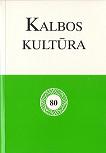Lietuvių bendrinės kalbos kilmės klausimu
On the issue of the origin of Standard Lithuanian
Author(s): Zigmas ZinkevičiusSubject(s): Language and Literature Studies
Published by: Lietuvių Kalbos Institutas
Keywords: Standard language; Reformation; varieties of language
Summary/Abstract: The paper gives a brief summary of the main ideas of the book Standard Lithuanian: its origin and development (Lietuvių bendrinė kalba: kilmė ir raida) written by the author in 2005. The book has not been published yet. The origins of written Lithuanian can be traced back to the middle of the 13th century. These could have mainly been translations of prayers and hymns into Lithuanian. However, the oldest manuscripts have not survived. Lithuanian printed books appeared in the years of the Reformation and Counter-reformation. At that time Lithuania witnessed the development of two written varieties of the language: one was meant for the purposes of the episcopate in Vilnius and the other—for those of the episcopate in Samogitia (Žemaitija). The third variety of written Lithuanian evolved in the Duchy of Prussia (a former state of the Teutonic Order). The third variety was the Lithuanian Language of Prussia. It was the most archaic and performed a very important role in the history of the standard language. In 1547 the first Lithuanian book Catechism by Martynas Mažvydas was published there. The most outstanding author of written Lithuanian at that time was Jonas Bretkūnas (Johannes Bretke), who published two volumes of Postilla (1591) and Biblia (1590). At that time Lithuania’s nobility mostly appreciated Polish traditions and language which they fully adopted and which resulted in the deterioration of the written variety of the Lithuanian language at the end of the 18th century. In the second half of the 19th century when the Lithuanian national movement started, educated people saw the development of Lithuanian, mainly in Prussian Lithuania, which used the written language throughout the country. The written language variety was thus transferred to the Lithuania Major (the role of the newspaper Aušra was extremely important). At that time the linguist Jonas Jablonskis (1860-1930) played a major role. Due to his huge contribution to the normative language he is often called the father of Standard Lithuanian.
Journal: Bendrinė kalba (iki 2014 metų – Kalbos kultūra)
- Issue Year: 2007
- Issue No: 80
- Page Range: 131-134
- Page Count: 4
- Language: Lithuanian

